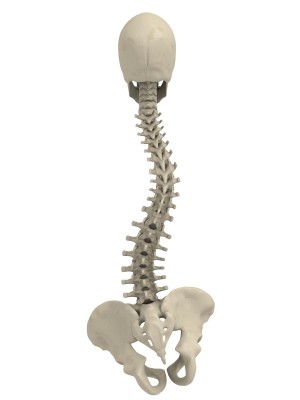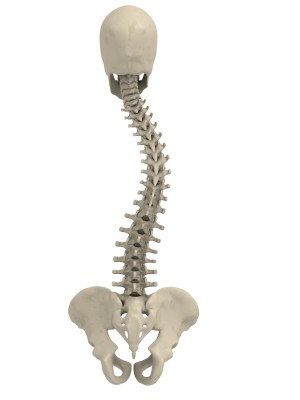Scoliosis is a term I have heard many times in practice in Kings Cross. Many of my patients come in telling me, with concern, that they have scoliosis thinking that something is seriously wrong. There is clearly a breakdown in effective communication between the patient and the person who makes the diagnosis. Whoever gives the diagnosis has a duty to let the patient know what it means, how bad it is and whether it will get worse.
Many of the patients I have seen who claim to have a scoliosis actually have no scoliosis whatsoever on examination, suggesting to me that they have either been misdiagnosed or the scoliosis they may have had was self correcting.
What is Scoliosis?
Scoliosis is the lateral (sideways) curvature of the spine. Viewed from the back the spine should run vertically in a straight line, but in cases of scoliosis, the spine curves in one or two directions. There are two types of scoliosis; Postural and Structural.
Postural Scoliosis
In postural scoliosis, the deformity is secondary or compensatory to factors outside the spine such as a short leg on one side or a pelvic tilt due to contracture of the hip on one side. When the patient sits down the curvature disappears due to the leg length discrepancy or pelvic rotation being cancelled out.
As you can see on the picture to the right, the pelvis is hitched up on the right. The body has a built in system that wants to keep the eyes on a level plane so that as the spine bends and twists, it compensates in different places so that the head can remain level.
Structural Scoliosis
Structural scoliosis consists of a non-correctable deformity of certain affected segments such that when the patient is seated the lateral curvature of the spine remains. In the initial phases this may be correctable, but if left untreated this may become permanent. This can then lead to changed in the curvature of the ribs, such that when bending forwards there is a clear “hump” on one side of the ribcage.
As you can see on the right hand picture the pelvis is level unlike in the first picture and yet the spine is still curved sideways. This implies that there are structural changes within the segments of the spine themselves.
Clinical Features
Deformity is usually the presenting sign; an obvious skewing of the spine or a rib hump. Balanced curves may go unnoticed until an adult presents with backache or in childhood where screening programmes are conducted.
Pain can occur in the muscles either side of the spine, particularly in those with postural scoliosis. In extreme cases there may also be neurological complications
X-Rays can show the extent of the scoliosis clearly.
Treatment
The aims of treatment are to prevent a mild deformity becoming severe or to correct an existing curvature that is unacceptable to the patient.
Non-Surgical
If the patient is approaching skeletal maturity and the deformity is less than 30 degrees and well balanced, treatment may be unnecessary unless there is clear progression.
Exercises may be prescribed which will help muscular tone, although they have little effect on the curvature, but they may inspire confidence and may slow the progression. Osteopathy or manual therapies can work on any imbalances of tight to weak muscles and help to mobilise tight or restricted joints. Application of tape, such as Kinesio Tape, may help to remind the patient to self correct their posture.
Leg lengths should be measured and pelvic rotation tested for. In cases of leg length differences, an orthotic shoe insole can help to correct the scoliosis when standing or walking.
Bracing may be the next step which consists of an external support fixed by thoracic and pelvic corsets. It is recognised that the brace will not reduce the curves, but will help to prevent them getting worse.
Operative Treatment
Surgery is indicated in those whose curves are greater than 30 degrees, especially in children, or for mild curves that are deteriorating rapidly. The objectives are to halt the progression of deformity and to straighten the curves. These options consist of rods or wires implanted alongside the spine which should help to correct the curvatures over time (much like orthodontic braces). These methods should be considered if all other options have not worked as they are permanent and restrictive as they take out the majority of spinal movement.
